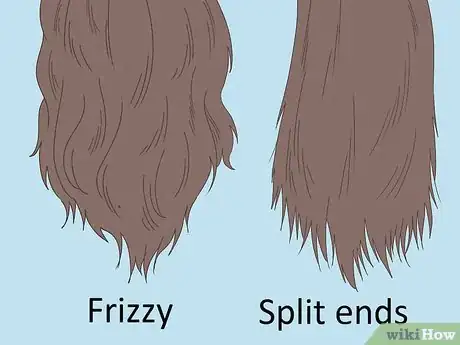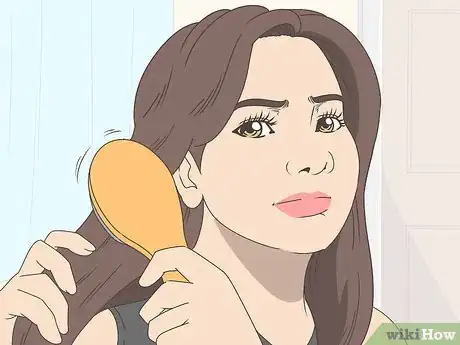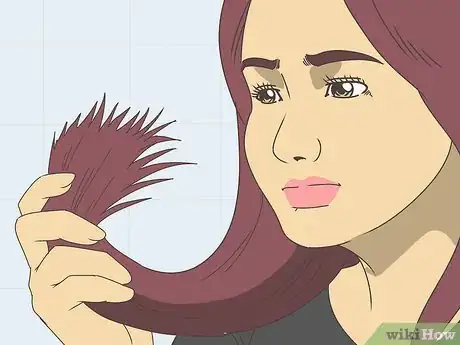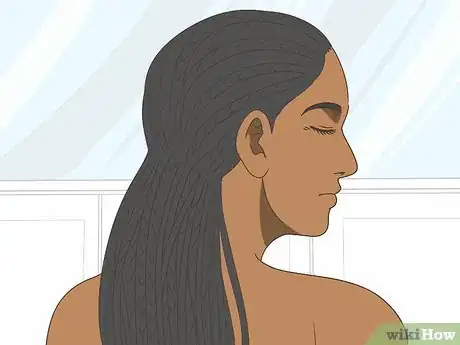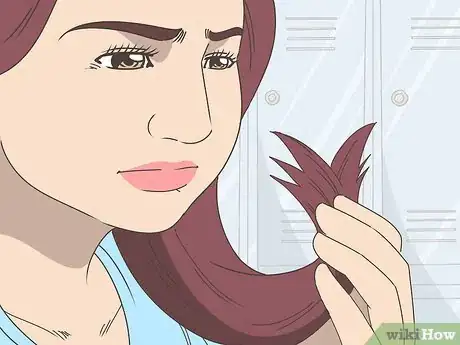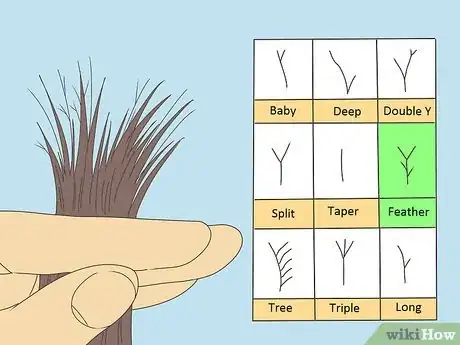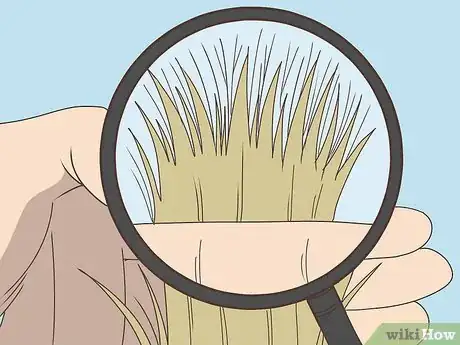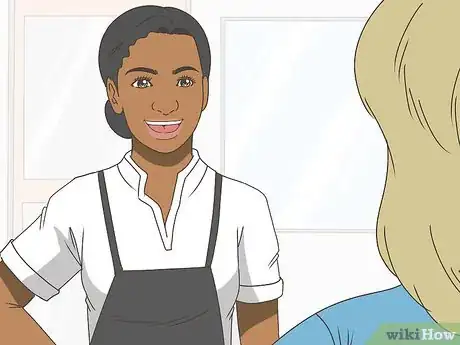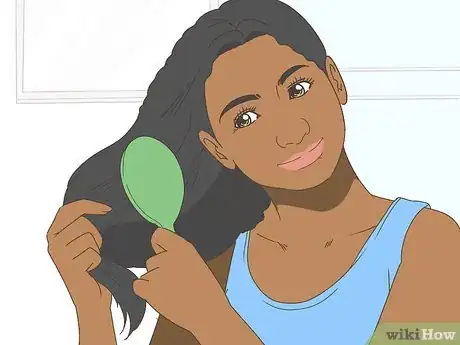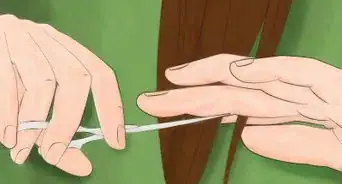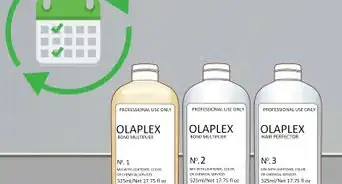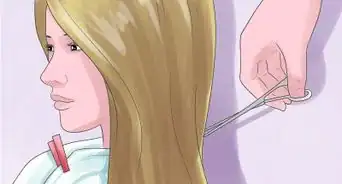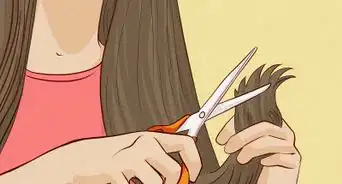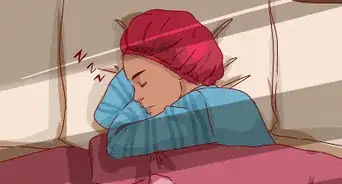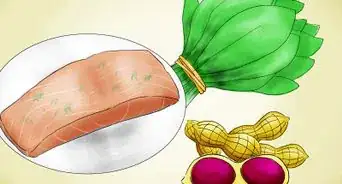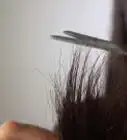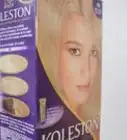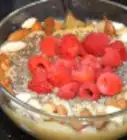This article was co-authored by Jenny Tran and by wikiHow staff writer, Jessica Gibson. Jenny Tran is a Hair Stylist and the Founder of JT Hair Lab by Jenny Tran based in the Dallas, Texas metro area. With over seven years of professional hair styling experience, Jenny specializes in hair coloring, haircutting, and hair extensions. JT Hair Lab is an authorized carrier of R+Co and of Milbon and is committed to using products with quality ingredients.
There are 8 references cited in this article, which can be found at the bottom of the page.
This article has been viewed 601,585 times.
You may think that split ends are just a nuisance. But, split ends are actually damaged strands of hair. This fraying or splitting of hair is known as trichoptilosis. It's important to trim away split ends to prevent the split from traveling along the strand of hair towards your scalp. Since you need to know whether or not you have split ends, check your hair regularly and recognize what split ends look like.
Steps
Recognizing Split Ends
-
1Distinguish between split ends and frizz. You may have a frizzy hair texture, regardless of the health of your hair. If your hair is frizzy, then it's likely that your hair will consistently be poofy. At the same time, dry, tangled, and unmanageable hair is often a sign that the hair is damaged. In this case, only the damaged portion of your hair will be affected.[1]
- For example, if you're having trouble getting your hair to lie flat and it's humid out, you're probably dealing with frizz.
- If your hair becomes easily tangled and looks dry at the ends, then you probably have split ends.
-
2Notice if your hair feels dry and is difficult to style. Damaged hair won't hold onto moisture, so it'll feel dry even if you're using good hair care practices. Additionally, it won't hold volume and will be hard to manage. You may find it hard to comb.[2]
- You may find that your hair never feels smooth, or that the top of your hair feels smooth, while the ends feel rough and dry.
Advertisement -
3Check your hair often. It's easy to fall into a hair routine where you use the same products and treatments again and again. Be in the habit of closely looking at your your hair at least once a week. This way, you'll be able to catch split ends early before they spread up the length of the strand.
- If you notice a lot of split ends, reduce how often you style your hair with heat or chemicals. When you do use heat, make sure you apply a heat protectant beforehand. Additionally, condition your hair often and replace old or cheap brushes and combs.[3]
- You'll still need to trim the split ends, but changing your hair care routine going forward could prevent split ends in the future.
-
4Braid your hair, if it's all 1 length. Divide sections of your hair into braids that are about 1 inch wide. Keep the tension even as you braid so you don't make the braid taper unnaturally. Look at the braids of hair to see if they are the same thickness from top to tip. If they taper by the end, the hair is damaged and probably has split ends.[4]
- This method for finding split ends doesn't work if your hair is weighted or layered. If your hair is over 12 inches long, it may start to taper because of normal wear (not split ends).
-
5Look for common split ends. Wear your hair loosely so you can pull strands in front of your face. Examine the tips of several strands. Each strand of hair should be straight at the end. But, if the hair is split, the strand will fork off into two or three different directions.
- It's easy to remember that common split ends make little "Y" shapes at the tips of your hair strands.[5]
-
6Examine your hair for different types of split ends. There are more variations of split ends than you may think. If your hair has more complex split ends, your hair may be more damaged and need more of a trim. Look for:[6]
- Triple/Multiple splits: these look like regular splits, but there could be three, four, or even five splits on the same end.
- Feather/Tree splits: these are split ends that appear all over a strand of hair, either all on one side or switching back and forth like tree branches.
- Double Y splits: this happens when a split forms into another split.
- Long or deep splits: if a regular split isn't trimmed, but keeps growing, one end of the split just keeps on growing.
- Baby splits: this is the beginning of a new split which will develop into a larger split.
- Tapered splits: these are just regular strands of hair that get thinner and thinner towards the end of the hair.
- White spot splits: white spots develop on the hair when the strand repeatedly tapers in and out.
- Thickening splits: the split has formed but the ends haven't separated yet.
- Offshoot splits: there is a white spot from where a thickening split formed, but didn't actually split off.
- Incomplete split: the split formed, but then joined together at the end and continued growing.
-
7Use a magnifying glass. Either take a plucked strand of hair or hold your hair in front of you. Take a magnifying glass and examine the hair for signs of splitting, fraying or feathering. Realize that just looking at a strand or two of hair won't help you find the split ends. Instead, it will give you an idea of how healthy your hair is.[7]
- For example, if you check 5 strands of hair under the magnifying glass and 4 of them are split, your hair is probably pretty damaged in general. But, if you don't find any or only see one, your hair might be pretty healthy.
Treating and Preventing Split Ends
-
1Talk with your hair stylist. If you're still unsure whether your hair is fraying at the tips, ask your hair stylist to take a look the next time you get your hair cut or styled. You could also ask a friend to take a look at your hair for signs of fraying. This may be especially helpful if you have short hair and can't pull the hair between your fingers to check.
- Consider how often your hair tangles. If it frequently tangles or needs to be brushed, your hair probably has split ends that are contributing to the knots.[8]
-
2Learn what causes split ends. Research has shown that overusing dandruff shampoos that contain ketoconazole 2% can cause split ends.[9] Blowing out, curling, using a flat-iron straightener and chemically treating your hair (with bleaching, coloring, or perming) can all damage your hair over time.[10]
- Even a simple hair routine like brushing your hair can damage hair if you brush your hair when it's wet. Similarly, pulling on your hair too hard can also cause split ends.
-
3Remove the split ends. Since hair is made up of tissue that isn't living, you can't heal the split ends. Although you can help the split ends stay closer together by moisturizing well, the hair is still damaged. To treat split ends, you need to trim at least 1/2 an inch or 1 inch (2.5 cm) (depending on how bad the split ends are). If you have a lot of split ends, consider getting a complete trim of all of your hair cutting at least 1/4 to 1/2 inch off the ends.
- Always use scissors to trim in a straight line. Never tear the hair using your fingertips.
-
4Prevent split ends in the future. Be gentle on your hair. Avoid repeated hair treatments that can damage your hair. For example, don't brush your hair forcefully or you could break the strands. You should also avoid chemically treating your hair on a regular basis. This might mean that you follow your hair's natural tendencies rather than fighting them. Remember to trim your hair at least once every few months to catch split ends before they damage your hair.[11]
- For example, if you have curly hair, don't use a flat-iron straightener every day. This can damage your hair over time and cause split ends.
- You can also add healthy fats (like avocado or olive oils) to your diet. These may improve your hair's health and strengthen the strands.
Expert Q&A
Did you know you can get expert answers for this article?
Unlock expert answers by supporting wikiHow
-
QuestionWhat causes hair to split and break?
 Laura MartinLaura Martin is a Licensed Cosmetologist in Georgia. She has been a hair stylist since 2007 and a cosmetology teacher since 2013.
Laura MartinLaura Martin is a Licensed Cosmetologist in Georgia. She has been a hair stylist since 2007 and a cosmetology teacher since 2013.
Licensed Cosmetologist
-
QuestionCan you actually repair split ends?
 Laura MartinLaura Martin is a Licensed Cosmetologist in Georgia. She has been a hair stylist since 2007 and a cosmetology teacher since 2013.
Laura MartinLaura Martin is a Licensed Cosmetologist in Georgia. She has been a hair stylist since 2007 and a cosmetology teacher since 2013.
Licensed Cosmetologist
-
QuestionDo split ends cause hair to stop growing?
 Laura MartinLaura Martin is a Licensed Cosmetologist in Georgia. She has been a hair stylist since 2007 and a cosmetology teacher since 2013.
Laura MartinLaura Martin is a Licensed Cosmetologist in Georgia. She has been a hair stylist since 2007 and a cosmetology teacher since 2013.
Licensed Cosmetologist
References
- ↑ http://www.hairfinder.com/hair4/split-ends.htm
- ↑ Jenny Tran. Professional Hair Stylist. Expert Interview. 19 May 2020.
- ↑ Jenny Tran. Professional Hair Stylist. Expert Interview. 19 May 2020.
- ↑ http://www.thenaturalhavenbloom.com/2010/06/method-to-see-split-ends-no-heat.html
- ↑ http://www.howtomakeyourhairgrowfastertips.com/did-you-know-there-are-16-different-types-of-split-ends/
- ↑ http://www.allure.com/beauty-trends/blogs/daily-beauty-reporter/2015/06/types-of-split-ends.html
- ↑ http://www.hairfinder.com/hair4/split-ends.htm
- ↑ http://www.curlynikki.com/2014/03/7-signs-you-need-trim-now.html
- ↑ http://www.ncbi.nlm.nih.gov/pubmed/8440564
- ↑ http://www.ncbi.nlm.nih.gov/pmc/articles/PMC2695167/
- ↑ Jenny Tran. Professional Hair Stylist. Expert Interview. 19 May 2020.
About This Article
To detect split ends, start by pulling a few strands of hair in front of your face and looking at the tips. If the hair forks off in two or three directions or forms a “Y” shape at the end, the hair is split. You can also look for feather splits, where the strand gets thinner and thinner as you get towards the end of the hair. Additionally, try to notice whether your hair feels dry or tangled when you comb it, since that can be a sign that you have split ends. For tips from our Beauty co-author on how to remove split ends without getting a full haircut, read on!
